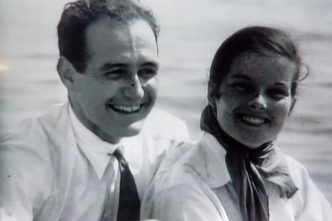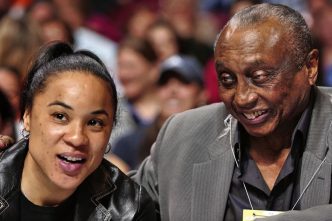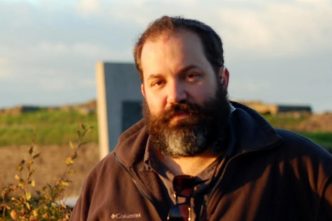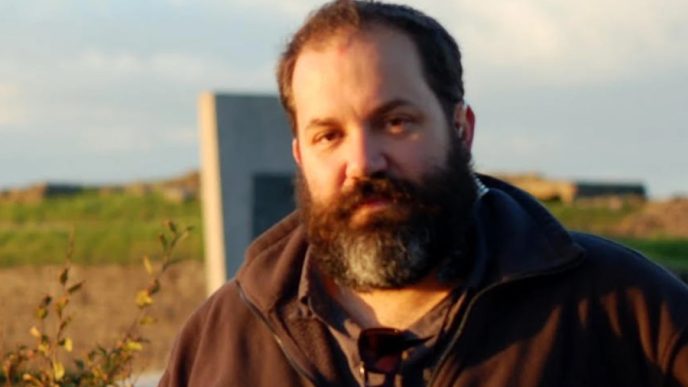Basic Information
| Field | Details |
|---|---|
| Full Name | Ludlow Ogden Smith |
| Also Known As | S. Ogden Ludlow; Ogden Smith Ludlow |
| Birth | February 6, 1899, Philadelphia, Pennsylvania |
| Death | July 7, 1979, New Canaan, Connecticut |
| Burial | Wayne, Pennsylvania |
| Parents | Lewis Lawrence Smith (1864–1950); Gertrude Gouverneur Clemson Smith (1872–1947) |
| Siblings | Lewis Gouverneur Smith (b. 1897); Lawrence Meredith Clemson Smith (1902–1975) |
| Education | Philadelphia upbringing; collegiate associations through social and family circles |
| Military Service | U.S. Navy, World War I, 1918–1920 |
| Occupation | Businessman; founder and president of Ogden Ludlow Inc. (bank systems) |
| Notable Innovation | “Ludlow Formula” for savings bank operations |
| First Marriage | Katharine Houghton Hepburn (m. December 12, 1928; div. May 8, 1934) |
| Second Marriage | Elisabeth Katharine Albers (m. September 26, 1942; d. 1973) |
| Children | Lewis Gouverneur Ludlow Smith; Katharine Ramsey Ludlow (Sharratt) |
| Philanthropy & Arts | Backed theatrical projects; supported Hepburn’s 1939 Broadway comeback |
Early Years and Naval Service
Born into Philadelphia’s well-heeled society on February 6, 1899, Ludlow Ogden Smith grew up with the steady footing of family means, civic-minded parents, and expectations to match. As the Great War drew to a close, he answered the call to serve, joining the U.S. Navy in 1918 and remaining through January 1920. Those two years—brief on a timeline, weighty in experience—sent him into adulthood with discipline and a global outlook that later infused his approach to business.
A Marriage that Brushed the Spotlight
His name is often stitched into Hollywood history by virtue of a singular union. On December 12, 1928, he married Katharine Houghton Hepburn, whom he had met as she was finishing at Bryn Mawr College. He was 29; she was 21; the match joined two bold spirits from progressive East Coast families. At Hepburn’s request, he soon adopted the name S. Ogden Ludlow, a change that helped differentiate their public identities at the dawn of her career.
By 1932, Hepburn’s move to Hollywood—and the tide of her ambitions—strained the marriage. They divorced on May 8, 1934, in Mexico, with some references noting an additional U.S. confirmation in 1941 to tidy the legalities. Yet the end of the marriage was not the end of their bond. They remained affectionate confidants, and when Hepburn sought a stage resurgence in 1939 with The Philadelphia Story, he played a financial and moral part in lifting the curtain. She would later acknowledge how much she asked of him; he gave without spectacle.
Building a Career in Finance
Outside the bright beam of show business, Smith built a career on systems, not headlines. He founded Ogden Ludlow Inc. and served as its president, focusing on the mechanics of savings bank operations—the unsung gears that make an economy hum. His “Ludlow Formula” emerged as a practical approach to standardizing and sharpening calculations in bank workflows, the sort of mid-century innovation that foreshadowed today’s computational finance. If his first act intersected with Hollywood, his long second act unfolded in boardrooms and back offices where precision pays the bills and prevents the fires.
Second Marriage, Children, and Home Life
On September 26, 1942, Smith married Elisabeth Katharine Albers in Washington, D.C. They had two children in the 1940s—Lewis Gouverneur Ludlow Smith and Katharine Ramsey Ludlow (later Sharratt)—and settled into a rhythm of family firsts, professional progression, and a quieter social calendar. The couple’s marriage lasted until Elisabeth’s death in 1973. Their children, deliberately shielded from public attention, continued the family’s tradition of discretion.
A Philadelphia Family: Parents, Siblings, and a Tradition of Service
The Smith family belonged to the tapestry of Philadelphia’s upper class, with threads of commerce, reform, and civic engagement. Ludlow’s father, Lewis Lawrence Smith (1864–1950), was a businessman whose career underwrote the family’s stability. His mother, Gertrude Gouverneur Clemson Smith (1872–1947), moved in progressive circles and was active in the cause of women’s suffrage, mirroring the reform-minded spirit that defined the era.
Ludlow’s older brother, Lewis Gouverneur Smith (b. 1897), remains lightly recorded in public sources. His younger brother, Lawrence Meredith Clemson Smith (1902–1975), carried the family’s practical idealism forward; among Lawrence’s children was Sarah Ludlow Ogden Smith (1943–2025), a social worker and community advocate whose life reflected the family’s longstanding commitment to conservation and public good. The Smith siblings and their descendants have been connected to land stewardship in Maine, including donations that supported the creation and preservation of parklands such as Wolfe’s Neck Woods State Park.
Name, Identity, and the Public Eye
Names mattered in Ludlow’s era, and he bore several over the years: born as Ludlow Ogden Smith, he became more widely known as S. Ogden Ludlow after 1928. Later variations—including Ogden Smith Ludlow—appeared in records, a paper trail that mirrors his life’s twin tracks: the public name linked to a celebrated actress, and the private name he used to do the work he loved. The contrast is telling. Where one name shows up in theater anecdotes, the other lives in bank offices, conference rooms, and correspondence.
Recent Mentions and Cultural Memory
In recent years, his name surfaces mostly when the past draws breath—museum acquisitions, family obituaries, and social media threads that revisit Hepburn’s early life. In 2024, news around Hepburn’s 1928 wedding dress revived interest in their whirlwind marriage. Family notices, like the 2025 obituary of his niece Sarah, point to a lineage grounded in advocacy and community service. On video platforms, Ludlow often enters stage right, a supporting player who shaped a star’s first act while crafting a career of his own.
Extended Timeline
| Year | Event |
|---|---|
| 1899 | Born February 6 in Philadelphia, Pennsylvania |
| 1918–1920 | Serves in the U.S. Navy during World War I |
| 1927 | Meets Katharine Hepburn near Bryn Mawr College (approximate) |
| 1928 | Marries Hepburn on December 12; adopts the name S. Ogden Ludlow |
| 1932 | Hepburn relocates to Hollywood; separation grows |
| 1934 | Divorce finalized on May 8 in Mexico |
| 1939 | Helps support Hepburn’s Broadway comeback in The Philadelphia Story |
| 1941 | U.S. divorce confirmation noted in some records (September 18) |
| 1942 | Marries Elisabeth Katharine Albers on September 26 in Washington, D.C. |
| 1940s | Births of son Lewis and daughter Katharine; leadership at Ogden Ludlow Inc. |
| 1973 | Death of wife Elisabeth |
| 1979 | Dies July 7 in New Canaan, Connecticut; buried in Wayne, Pennsylvania |
Selected Family Members
| Person | Relation | Years | Notable Details |
|---|---|---|---|
| Lewis Lawrence Smith | Father | 1864–1950 | Businessman; anchored the family’s standing |
| Gertrude G. Clemson Smith | Mother | 1872–1947 | Active in women’s suffrage and civic causes |
| Lewis Gouverneur Smith | Brother | b. 1897 | Maintained a private life |
| Lawrence M. C. Smith | Brother | 1902–1975 | Father of Sarah; associated with conservation efforts |
| Katharine H. Hepburn | First wife | 1907–2003 | Actress; married 1928–1934; remained lifelong friends |
| Elisabeth K. Albers | Second wife | 1918–1973 | Married in 1942; mother of his two children |
| Lewis G. L. Smith | Son | 1940s– | Private life; namesake honors family tradition |
| Katharine R. Ludlow (Sharratt) | Daughter | 1940s– | Later married; mother to David Ogden Ludlow Sharratt |
| Sarah L. O. Smith | Niece | 1943–2025 | Social worker; community advocate in Maine |
Financial Footing and Professional Achievements
Smith did not begin life at zero; he began on second base. Yet his trajectory shows he could steal third. He turned inherited advantage into enterprise, creating a niche firm—Ogden Ludlow Inc.—that specialized in the practical alchemy of banking: turning process into efficiency, formula into predictable results. His “Ludlow Formula” became shorthand in savings bank circles for streamlining work that, in modern terms, looks like the early scaffolding of computerized finance. Exact net worth figures never entered the public ledger, but his investments—in real estate, in the arts, in people—speak to a man who understood both numbers and nuance.
FAQ
Who was Ludlow Ogden Smith?
He was a Philadelphia-born businessman and socialite, a World War I Navy veteran, and the first husband of actress Katharine Hepburn.
What did he do professionally?
He founded and led Ogden Ludlow Inc., focusing on savings bank systems and creating the “Ludlow Formula” to improve financial operations.
Did he have children?
Yes, with his second wife, Elisabeth Albers, he had two children: Lewis Gouverneur Ludlow Smith and Katharine Ramsey Ludlow (Sharratt).
Why did he change his name to S. Ogden Ludlow?
At Hepburn’s request, he adopted the name S. Ogden Ludlow to differentiate his identity during her emerging career.
Did he stay in touch with Katharine Hepburn after their divorce?
Yes, they remained lifelong friends, and he supported her professionally, including aiding her 1939 Broadway comeback.
Was he involved in any controversies?
There is no substantive evidence of significant personal controversy; he preferred privacy and professional focus.
Where is he buried?
He is buried in Wayne, Pennsylvania, following his death in New Canaan, Connecticut, in 1979.














